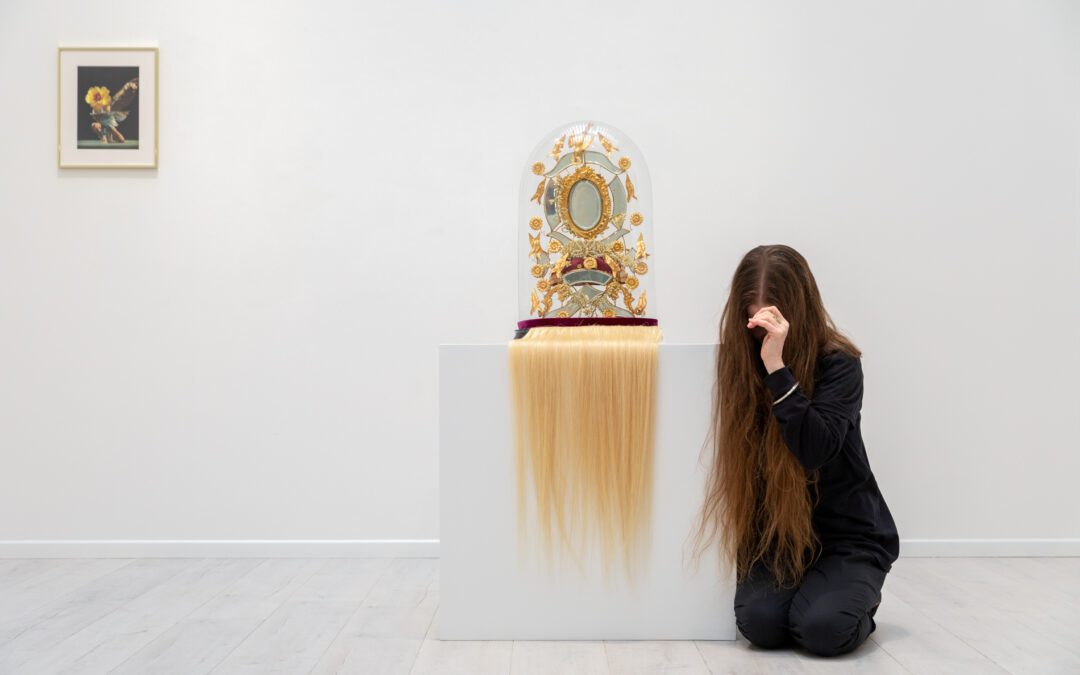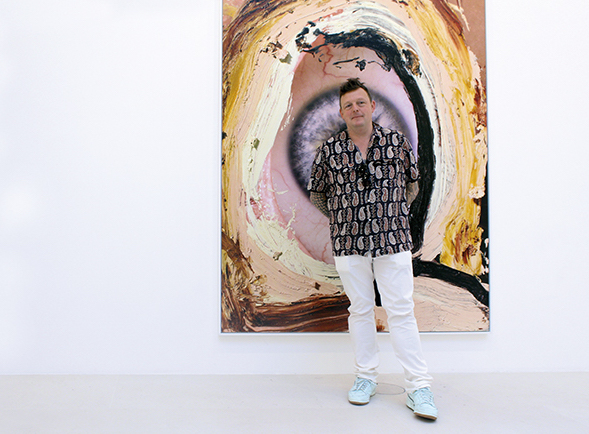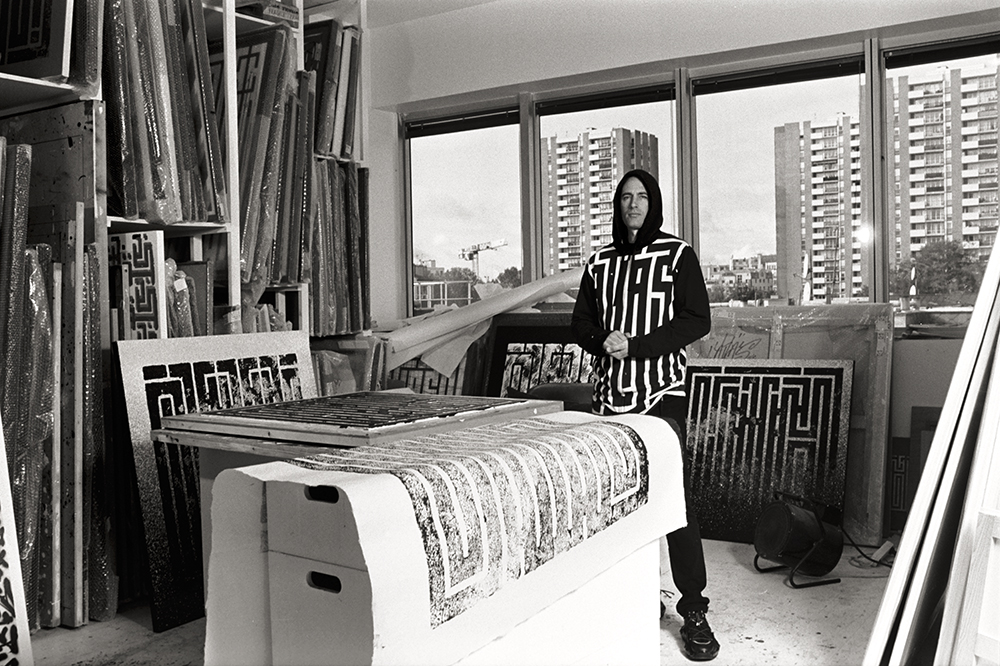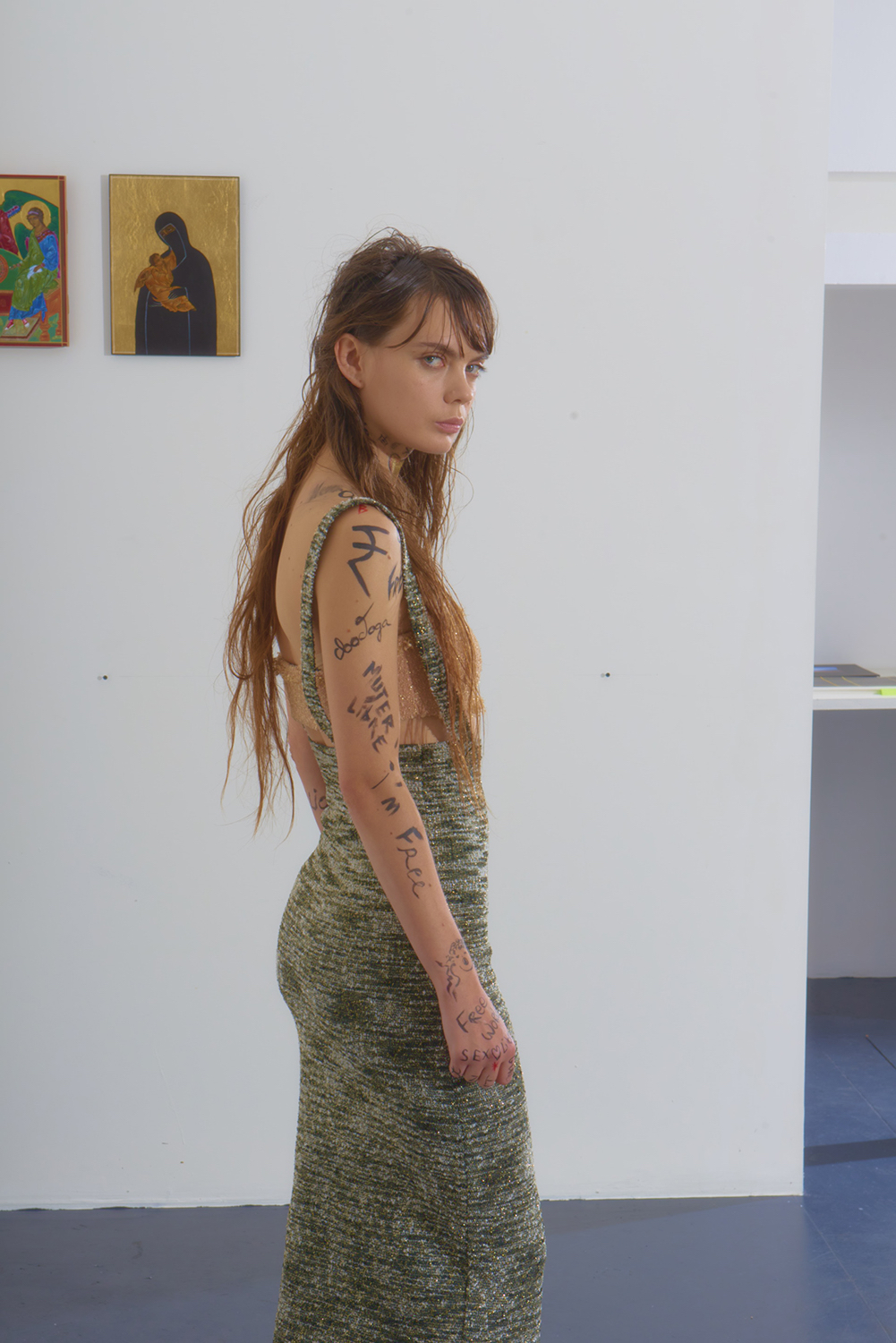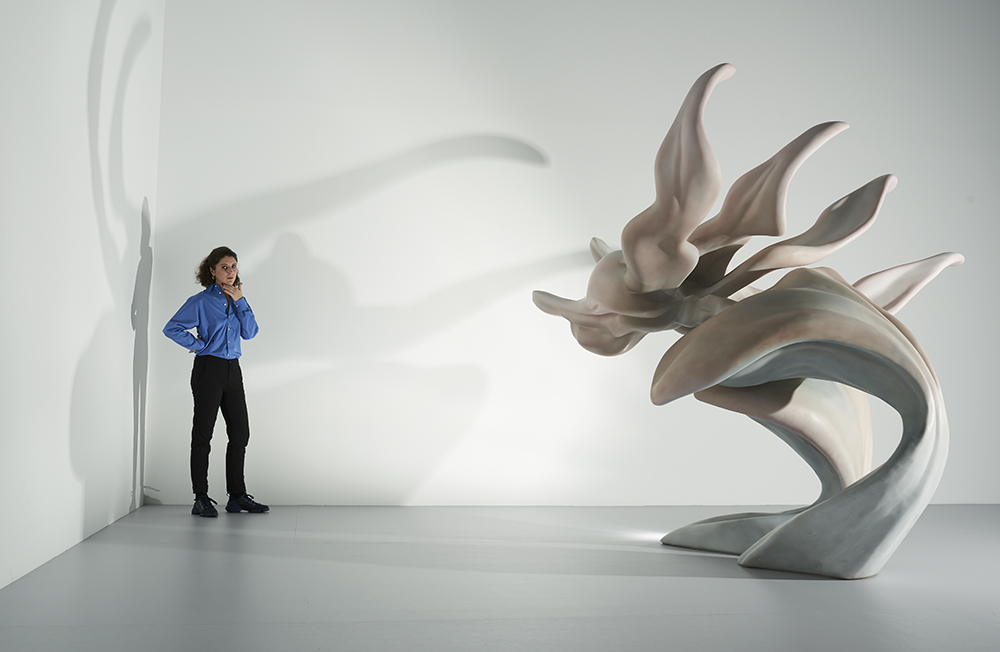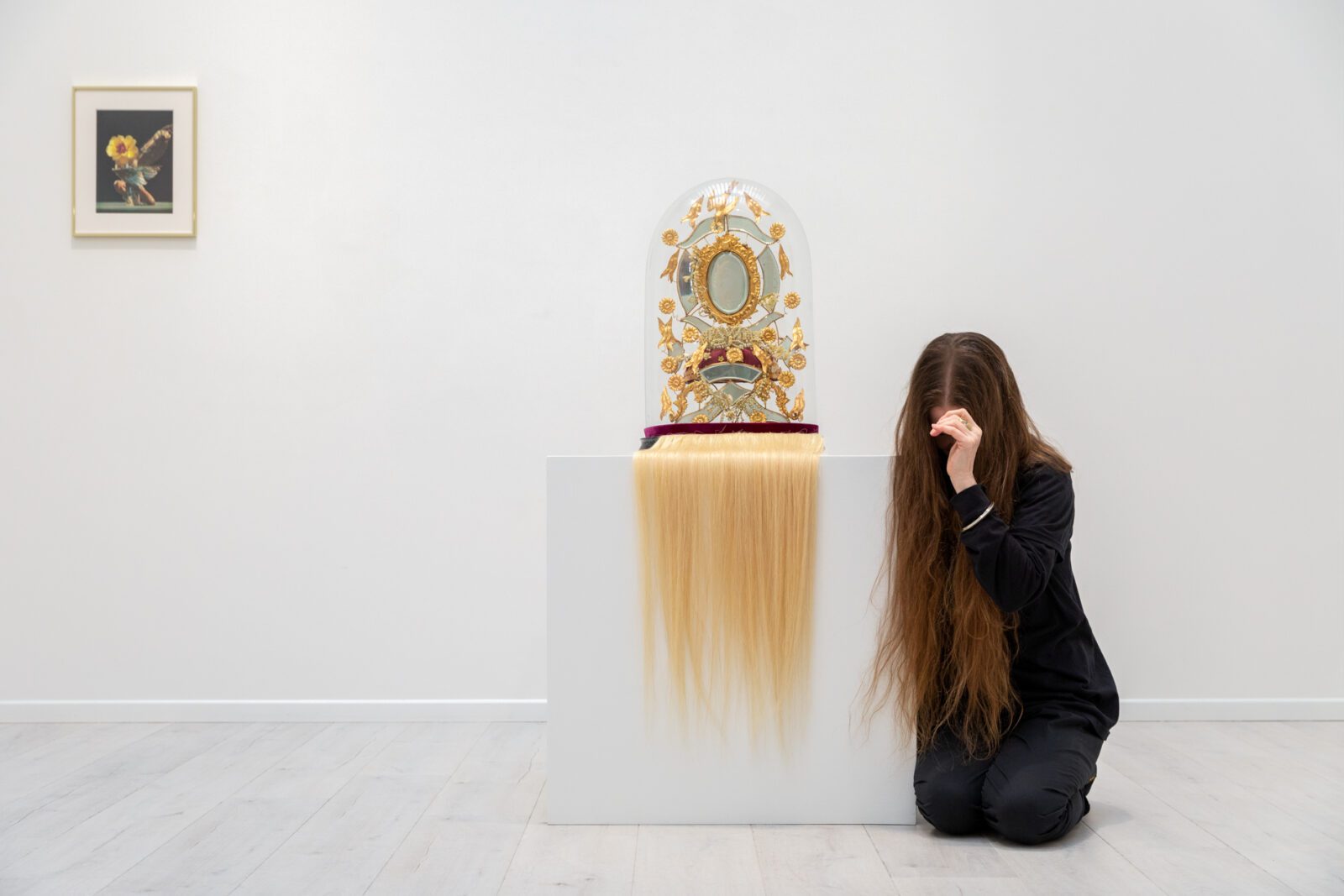
LINDER : AN INTERVIEW BY ARMELLE LETURCQ
By Crash redaction
LINDER AT Andréhn-Schiptjenko gallery
Liverpudlian artist Linder was front row at the legendary June 1976 Sex Pistols gig and witnessed first hand what would become the atomic bomb that would explode the city’s music scene onto the global stage. As synonymous with the punk movement as her musical counterparts, Linder’s radical artwork featuring reappropriations of the female form would go on to be featured on Buzzcocks and Sex Pistole single and album artworks. She witnessed and consequently documented at once the unparalleled anarchy of the punk take off, but also the crippling intergenerational trauma and anxiety that many within her generation suffered from, a real-result of post-war healing in a country torn to pieces by disillusionment and impoverished inner-city societies. With an burgeoning need to create art (she had been drawing since the age of three) she turned from her own anxieties and sufferings, and began collecting and cutting up magazines of all genres, from Playboy to women’s household magazines, reappropriating and imagining new narratives for her new characters. Her works have become synonymous with her unique unrelenting approach to feminist topics and in this exhibition, The Groom at Andréhn-Schiptjenko gallery in Paris Linder explores the elasticity of promise and resilience in the Cinderella fairy tale tradition, tracing its path from the story of Ye Xian in China 850, via tales such as the French classic Peau d’Ane, through to contemporary culture’s fascination with “living happily ever after” and the fascination for the instant “makeover” of both the body and the home. The exhibition comprises original photomontages ranging from sources as varied as film posters, Cinderella book series and glamor photographs taken by Chinese photographer Daisy Wu in the 1970s, as well as larger formats and reproduction techniques.
You were very involved in the Manchester music scene during the seventies and eighties. Can you tell us about when you first began making art?
Ever since I was very young, I always loved to draw. I was born in 1954 and in those days we only had one television at home with two channels, and they were only shown in the evening in black and white. The television was tiny, although now we have iPads the same size. I was always drawing these imaginary worlds and often I just looked at my mom’s fashion magazines for inspiration so they were quite glamorous worlds. They were never boring landscapes with a house and a tree. They’re always houses inhabited by beautiful models and I was just really creating those real fantasy worlds. And so even from a young age. It became innate because I was doing it so much. Whilst my parents were watching television, I would be drawing. Then I went to art school in Manchester in 1974. That was just this gorgeous sense of escape, getting away from home, and at that point, disco was so chic. Between disco music and bands like Roxy Music and Bowie there was a lot of dressing up, going out, dancing. One day in June 1976, I was quite bored and I remember seeing a little van going past with a poster which read, “Tonight… Sex Pistols, Buzzcocks and Slaughter And The Dogs!” Slaughter and the Dogs were another band which never became very successful in the end. There are now several books written about this one night in Manchester, it’s become a huge cultural reference. But in fact, it was in a very small venue and Johnny Rotten was on the door in a lurex sparkly jacket with his spiky hair. There weren’t many of us, even though when you read the books now, it’s like everybody in Manchester was there, but actually it was very empty. Buzzcocks played first and then Sex Pistols. I hate to over mythologize this, but I knew I was seeing something unique that I had not seen or heard before. There was also this anti-professionalism when compared with seeing Bowie who was always so stylized. Punk was almost shambolic. You had the sense that any minute the whole thing would just collapse. The guitarists couldn’t play guitar, the drummer couldn’t drum, it was deliberately amateur. But as I was watching it I couldn’t analyze it quickly enough. I knew that something quite shocking was happening. Of course, one rewinds the memory of this evening because now it has become mythic within cultural history, this one special concert. That night I was sitting in the audience and Buzzcocks came and sat next to me and asked me, “What do you do?” Of course, bluffing I said. “I’m a graphic designer.” Even though I was a student, they asked me to do their posters.” They were bluffing about being musicians at that point too. There was a sense of shared ambition among us to be seen as adults.
How old were you at that point?
I was around 22, it was during my final year of study. That was Buzzcocks’ second gig ever, and I started to do some design for them, got to know them and I started going out with the lead singer, Howard Devoto, so I went to all the early punk gigs in London. I just got to know that small scene very early on and it was extraordinary. People often ask me, “Could Punk happen again?” And I always say, “No, it can’t, because it has so much to do with the England that was in the background.” And at that time we had a refuse strike, so there was rubbish everywhere, which is funny because it is actually what’s happening right now in Paris. So now I’m in Paris and I’m thinking maybe punk could happen again here! (Laughs) If you look at photographs of punks, we tend to look at the hair, the torn shirt, but actually it’s that England. That England with rubbish all over the streets, that is impoverished, that is breaking down. Rather like now in Paris maybe?
Was Thatcher already in power at that time?
No, I think it was two years before Thatcher came into power. And we all were just going crazy, almost like now, when we went crazy about Brexit. So maybe there are parallels between France right now and Britain then. The music from that period only became called punk after about six months of the movement. At first it had no name and when something has no name, you can’t pin it down. So I think there was a lot of agency in those early months for punk to develop its aesthetic in Britain, which is very different from punk in America. The tabloid press, of course, loved shocking headlines and publishing them alongside terrifying photographs. So the whole thing was really accelerated, and moved very quickly. It was pre-internet, nobody had a phone. It’s extraordinary the speed at which the movement developed. It was a cultural shock, rather like Dadaism here. You’re using shock in a very conservative culture.
Yes, there is a connection between Dada and Punk visuals.
For me there was, for others not. But again, I’d been studying as an art student and I was always so interested in the Dada movement. I felt that I had a very intimate insight to be able to say, “This is our turn to embody that ambition, to be like John Heartfield or Hannah Höch. I was able to make those connections very early on. I remember finding my boyfriend’s big box of pornography, which is quite an intimate thing, isn’t it? And at first I questioned him as to why hadn’t he told me he owned them, and then I said, “Well, can I draw them?” He said, “Yeah, whatever you want.” So I started drawing the women and all the Playboy centerfolds, and they were quite angry drawings, in pen and ink. But then one gorgeous day, I put all the pigments away and I just sat with those magazines. I had all these copies of Playboy and all these copies of women’s household magazines. I just started to cut up the two and jigsaw together the two separate worlds. The gender divide was so large back then. On that table I had a sheet of glass, a scalpel and a pair of scissors. I started to cut and immediately was fascinated by moving the eye from one woman in Playboy onto another woman in Vogue and things like that. I knew something really interesting was happening.
Were you creating your work for yourself personally at that time or were you already working as an artist?
Well I’d been drawing since I was three and I was twenty-two at that time, so I had spent almost two decades drawing. And even I was getting bored with it. I think within Punk, boredom is very important. There’s a Buzzcocks song, Boredom, and it explores the idea that everything is boring. So I thought to myself, “I’m just so tired of making a mark and I’ve become like a surgeon and very clean and very forensic-like, who has created this gender mess?” So cutting up magazines, and then getting the glue out almost felt like a post mortem, like a forensic inquiry into a body of imagery. And I just loved it. And the montages were published very quickly onto the single sleeve of Buzzcocks song Orgasm Addict, and in various fanzines. At that time, there were only two photocopiers in the whole of Manchester. Both of them refused to print them for me because they said that they were pornographic. It was really difficult to get my work out because I was female. I think if I’d been male, maybe they would have photocopied them.
So you were already thinking of exhibiting your work?
No, because at that time, art in Britain was so boring. It was mainly men, big sculptures. We didn’t want to be artists. It was very uncool to say you were an artist. We didn’t have that ambition. We were more interested in music and graphic design. Barbara Kruger and Jenny Holzer were both doing graphic design and I remember thinking that I didn’t want to be working with paint and easel. I want to be doing record covers for Roxy Music. That cleanness and gloss and sheen of graphic design was so appealing. But photo montage offers that because there’s just the scalpel, and you’re cutting out the most glamorous images. In English, the etymology of the word glamor, at its root, is to do with witchcraft. It’s like you cast a spell upon somebody. That’s what glamor actually means. It’s almost like a witch who makes an image or a spell, and glamorous actually means to enchant someone. So I’m really interested in what we refer to as glamour photography. I think Punk, it was really trying to chase that. It was trying to get that glamor. But at the same time, it was deliberately ugly. We had horrible hair, bad makeup and ripped clothes. So it was using that which was ugly to create a new beauty. It was something that happened very quickly so we couldn’t analyze it at the time. But now, looking back, we can see that ugliness and clumsiness and being ill at ease, rather than being gorgeous dancers or models. It was all to do with being slightly neurotic-looking, sort of border-line, we were looking towards the French romantics as well.
So you were not thinking about an artistic career, or connected with the arts scene?
No. And didn’t want to be! None of us did.
Art was “out” for you? A historical thing?
Yeah! (Laughs) We just saw art as a thing with a load of old men with big beards! We had zero interest in it.
So when did you begin to make exhibitions?
Well at first I began singing because everybody around me was either picking up the guitar, picking the drum, or a microphone. You didn’t need any technique. You can only know two notes…
You just have to shout and you’re good to go… (laughs)
Yeah! It was that simple. I suppose now you have a stage and you have the audience as two very separate entities.
Now in the music world, everything is so professional.
Yes and for a very small period of time, there was a moment where there was suddenly a democracy between the stage and the audience. And it wasn’t a big thing to sing or to play. It was very liberating, but it didn’t last long, because then you had the Yuppie culture and bands like Wham and it was all about feeling good. It was all about hair extensions and it became very commercial with 80s bands like Duran Duran, which is inevitable. I suppose true punk came and went very quickly, probably six to nine months in its purity. Then it got kind of diluted. Like any movement, it became impure.
But then there was Joy Division…
I know but I think Ian Curtis’ death in 1980 is now almost symbolic for something that was happening around that time. It’s still difficult to get far enough back to have perspective on it all. I know now there are hundreds of books written by academics on punk, et cetera, there’s an expression in England about the death bell. When somebody’s dying, you hear the bell. I think around that time, his death brought in that sense somewhere of some purity being lost, the sense of a visionary leaving us. We were all from the North and we all knew each other. We all rehearsed in this one old mill that had been made into rehearsal space and it was so cold, there was one little cafe and we would all drink cups of tea together whilst playing our guitars and our drums. In Manchester, we all knew each other. It was quite friendly.
And Joy Division were already very well known at that point…
It sounds awful but they almost became more well known when Ian died. Suddenly that name was just everywhere. But they were really successful. Ian would have been a huge star. He would have been amazing. I think another thing that’s part of punk romance is anxiety. Our parents were children in World War II, and I think as the children of our parents we inherited this mass anxiety, but we didn’t know what to do with it because we weren’t in a war. Neuroscience has now proven that trauma is passed on generationally. I listened to Kendrick Lamar’s new album and he’s talking about trying to stop that intergenerational trauma. But I did feel that everybody I knew, friends like Pete Shelley from the Buzzcocks, were all burning themselves all the time with cigarettes and they were cutting themselves. I was lucky that I didn’t do that, but I was burning images with cigarettes, I was cutting up images. So I was really lucky I could direct that impulse to self harm onto a magazine page whereas friends around me couldn’t do that. And they did really acutely self harm.
There was something very self-destructive about the movement…
Hence Ian being the ultimate symbol of that because of his suicide. But I was really aware of that source of shared anxiety and that generational inheritance of the terror of World War II from living with our parents.
After Joy Division and New Order in Manchester, there came the new generation of musicians such as The Smiths, who had a completely different sound from Duran Duran and all the commercial pop artists of the 80s. There was a new found rejection of synthesizers.
Yes and Manchester was such a rich city in terms of always somehow being plugged into a movement somewhere. Whether it was in Chicago, Detroit, or Cologne or Paris. It was pre-internet, pre-smartphones. Somehow we all wrote letters and we all got to know what was happening. And the music press was very important.
In France in the eighties, we were really looking at England. We didn’t care about the States, the influence from England was very strong and really the model for music for us.
It was an extraordinary time. Again, maybe because the skill set was quite low. You didn’t need to have been playing the guitar for ten years. It was just very liberating. You just took your place on the stage. And slowly everybody, of course, developed skills and people became proficient in their instruments. But it was an extraordinary blossoming of a city, even though the blossoms might have been black and darkened, it was still this extraordinary post-industrial blossoming of a city. I met Morrissey when he was sixteen, I saw him play in Paris this week and I said, “Do you realize it’s been forty-seven years since we’ve known each other?” We’re just laughing! We were like two old people, forty-seven years of having the same conversations about death and dying. But The Smiths and Morrissey’s use of language was outstanding.
They completely changed the musical landscape.
And it was again this anti-heroic image, wearing like a hearing aid, which provokes similar questions: Who is heroic and who is not? Hearing Morrissey sing two nights ago, to me he’s like Sinatra. He changes the emphasis on certain lines, so you just hear the lines that were written thirty-five years ago, so you hear them in a new way and you think, those songs do have a life. They go on and on and on.
Are you still based in Manchester?
I was living in London for a few years and then when the lockdown happened, I had the offer of a house on the coast of England near the Lake District. It’s a very romantic place. I have been talking about a residency here in Paris, maybe for six months but because I have a large scale show at one of the London institutions in early 2025, six months here would be too long otherwise I would go for it. So I don’t know where I’ll move to, but right now I wake up and see the sea every day.
Collage is a medium that you have worked with continuously throughout your career. Have you ever considered changing?
I realize when I’ve been doing a lot of photo montages that I start to wonder about what happened to this model/person in their life outside the image. And that’s often when I begin to think about the performance, I get tired of cutting out and I start really thinking about these characters. I could imagine a ballet happening with the characters in here. I could imagine a narrative beginning and thinking what soundtrack would these characters in this space have? How would they each move through this space? So I can feel now that urge coming to do a performance piece of a fairy tale.
Would you play in it yourself?
Yeah I’ve been on the inside many times, but sometimes I would more like to be like Busby Berkeley the American choreographer from the 1920’s who had like one hundred tap dancers. So inside me there’s a Busby Berkeley figure who wants a performance with sixty trumpet players all at the same time, usually I end up with six because of the budget. (Laughs) But I do a lot of performance work, both on stage and directing.
And you have made some films as well?
Yes, we were going to show one film here, but then we ran out of space. I love working in film because it’s like digital cutting up. I love moving images and working with soundtracks. My son composes film soundtracks. That’s really useful and we talk a lot about how sound really creates those moods with moving images. Recently I have started to return to drawing, and it’s gorgeous because drawing and using a scalpel uses the same motor skills and I realized I haven’t lost my ability to draw. Now that I have a pause, for the first time in a long time, I’m just going to do lots and lots of drawings with no intention, but just really to explore how to draw again. I just want another few months of the liberating way of working that comes when you haven’t got an exhibition. I’m just going to really inquire what the possibilities are and play freely.
And you also worked as a photographer for a while? You took a lot of pictures of Morrissey early on in his career?
Yes, because I went on his world tours, which was crazy. When I was doing graphic design as a young woman in Manchester, I had a camera and my intention was to be a photographer. I wanted to be Diane Arbus and go into weird places and photograph them. But then one night, on my way home from a The Damned concert I was horribly attacked by a man with a knife. And he took my cameras away, I didn’t care – I was bargaining with him! And he was arrested months later. He’d raped about seven different women. So I was really lucky that he did then run off with my cameras rather than raping me with a knife held to my throat. So then I felt very superstitious about taking photographs. I didn’t take photographs again for twenty years. I didn’t want to look at a camera, I didn’t want to think about a camera. But then my son was born in 1990 and I remember thinking, “I’m going to get a camera again because I want to photograph my son.” It was like taking that power back. Morrissey started his world tours at the same time. My son was barely a year old so I would be rushing to Japan for three days, then Los Angeles for four days. Suddenly in photographing the birth of my son, I also began photographing the rebirth of a post-Smiths Morrissey I was just taking thousands of photographs and suddenly I really loved the camera. I really loved taking photographs again.
Have you kept all the photographs?
Oh my God yes! That’s actually one of the tasks I have to do is to archive all the Morrissey negatives. Every now and again he asks me to take a look at them if he wants to make posters etc. Hopefully one day another book will happen, or an exhibition. It was so intimate because I’m a friend, so I was allowed everywhere all the time because obviously I wouldn’t do anything inappropriate. And it was just a crazy time, it would just be me and Morrissey in a decoy car trying to get past all the screaming fans. It was a very crazy time, but such a glorious time. But my son was so tiny, and so I was balancing motherhood with documenting my friend’s concert.
How old is your son?
He’s thirty-three and he’s having his first child now so there’s another generation coming through which is exciting. My son and I collaborate a lot, he always makes the soundtracks for my performance pieces. That cross-generational collaboration is really nice and I bring my history to him. Although sometimes when I’ll say to him, “Oh, I remember seeing Roxy Music for the first time, or I remember seeing Chic for the first time”, and he’ll say “Yes mum, I know. And our generation, what do we have?” It’s always like that golden age, as they say.
Do you think it was the golden age?
I think it kind of was. It’s difficult for the young generation these days, really difficult. Look at Spotify, you have to have something like one-million plays to get twenty euros.
And there’s so much music, so many films everywhere that you don’t know where to look anymore. We went crazy waiting for new records back in the day. I was living in the South of France and we would all rush to the store to get the vinyl albums imported from England, the moment they were available.
To actually go to the store. And there was that reverence for the object. But now my son says people don’t even listen to albums on Spotify, kids just listen to one track. And it’s difficult for this generation of musicians with little money given in return for their creativity. But we still collaborate, I just like those conversations that we have. I know there’s quite a lot of his young friends coming tonight and I enjoy talking with them and not being stuck in that generational bubble. I know I sound like a grandmother – well I am a grandmother actually! (laughs) – but I always try to stay really intrigued by those dialogues and to know what their anxieties are, how they stay mentally stable, what’s exciting them, what disappoints them. It’s really important, I think, that you always have that.
It’s essential to stay in touch with the new generation.
It’s really important because they have different problems than we have. And for me, they seem even bigger actually. Imagine if you had your parents following you on social media!
Social media is a nightmare actually.
In fact, I think it is, isn’t it? The people who engineer our attention are so clever.
People go to a party and they think only about that. Capturing it on social media and they are not there just to enjoy it. But I think the new generation understands the danger and the problem. They are very protective of their privacy.
You know more than I do because you’re dealing with them more than I am but I hope so. I think to be honest it’s actually the older generations who struggle. I know people of my generation and it’s just like they’re under hypnosis. It’s like, come on, put it down! Hopefully the new generation will just see how toxic it is. Almost like we look at plastic now. And they’ll find a way somehow, hopefully, to outwit this very clever engineering of our attention. But they’ve wired up our brains now, they know that when we get 100 likes, the reward center of our brain is triggered. It’s basic neuroscience. You get the likes and you want more likes. It’s like a high.
It’s an addiction.
It is an addiction, yes. I had to have my eyes tested a few weeks ago and the optician said she’s seeing 30 year olds with cataracts. She’s horrified. It’s a representation of that fact that our physical bodies were just not wired up to be doing that.
Yeah, it’s bad for everything. For the back, for the shoulders, for the neck. I remember I went to Korea fifteen years ago and everybody was watching their phones on the metro and I didn’t understand what they were doing. And then it was the same five years later in France.
It’s quite eerie on the tube. And I stand and watch everybody, it’s almost like they’ve won. It’s like a tiny incubator that has sucked us in, isn’t it? We try to keep some distance and there’s a new awareness around it. Hence why still doing print media is so important. I will bear witness to print media and how important it was, how important it is now.
The new generation loves print and magazines, analogic, film, vinyl, old cameras. They are nostalgic.
That generation was starved of weight. That kinesthetic feeling of something in your hands.They want to feel things. Vinyl and the weight of a camera. Vinyl sales, according to the BBC yesterday, are for the first time ever above CD sales. Not that I know anybody who buys CDs anymore so I don’t know how much that means! (Laughs)
Vinyl is coming back. I want all my old vinyls back from the 80s. I left them all at my ex-boyfriends place! (Laughs)
I think that was quite a gender thing, often I left my collections with boys. It was like it wasn’t okay for us to be the keepers of things. As women we were the ones to walk off with nothing.
Linder The Groom, until 6th May 2023 at Andréhn-Schiptjenko, 56, rue Chapon, 75003, Paris, France.
Open Tuesday-Friday 11am-6pm
Saturday 1-6pm
For more information please visit www.andrehn-schiptjenko.com
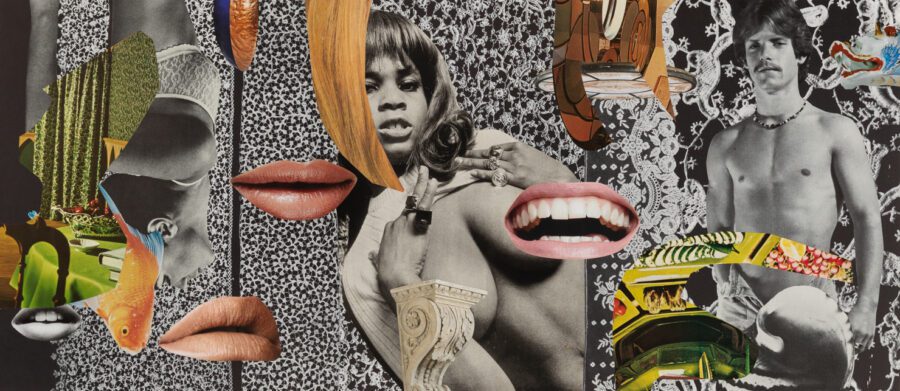 Linder, Moon market and touched by sun, 2023, Photomontage.
Linder, Moon market and touched by sun, 2023, Photomontage.
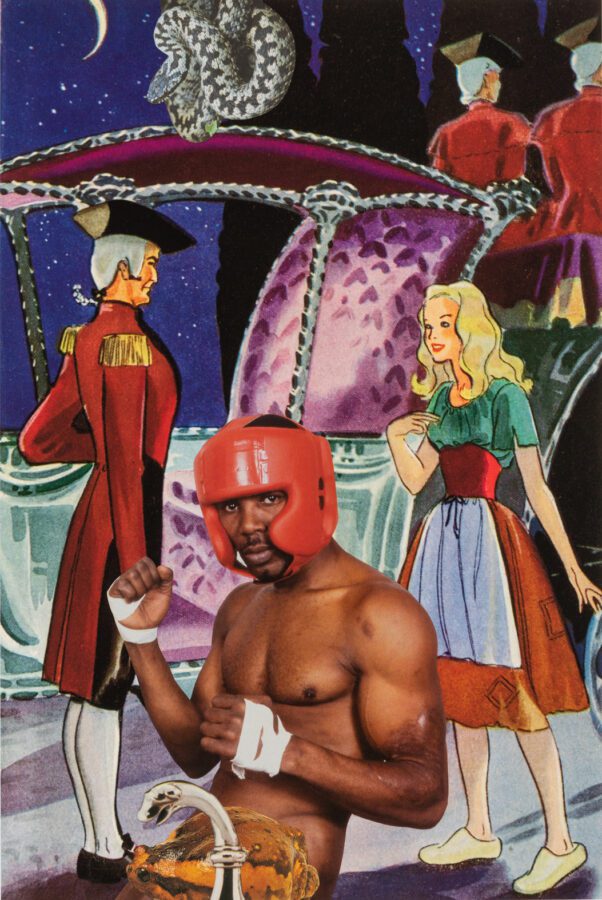
Linder, Veil of midnight, 2023, Photomontage.
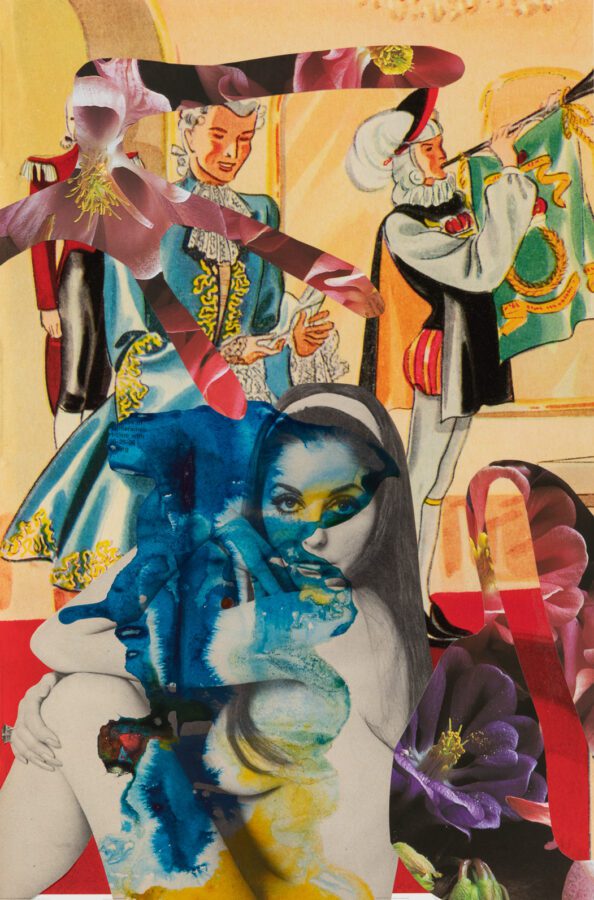
Linder, Boost the charm stat, 2023, Photomontage.
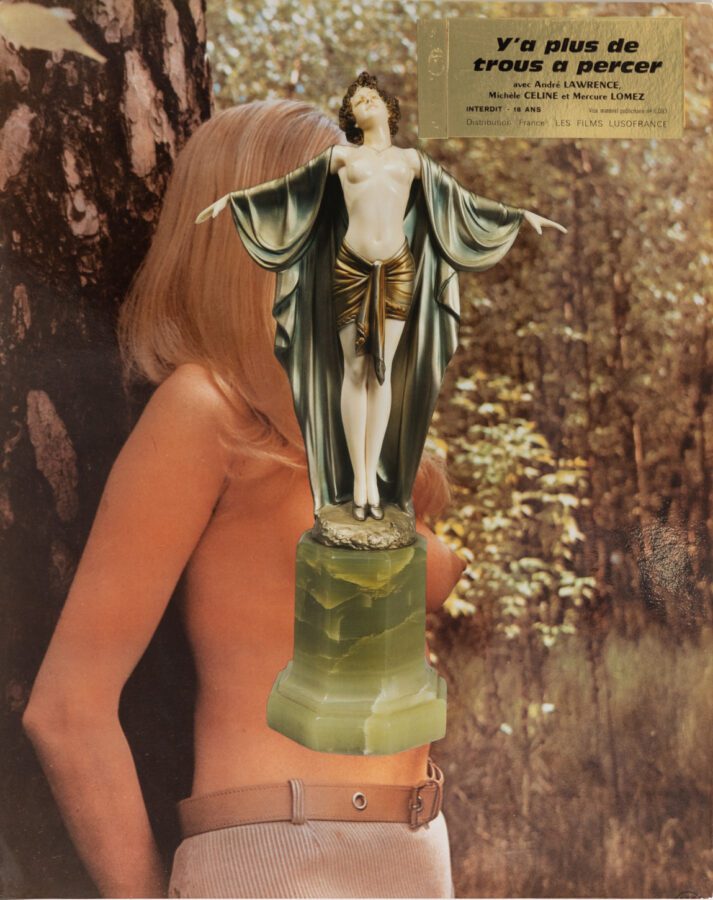
Linder, The ursuline order, 2023, Photomontage.
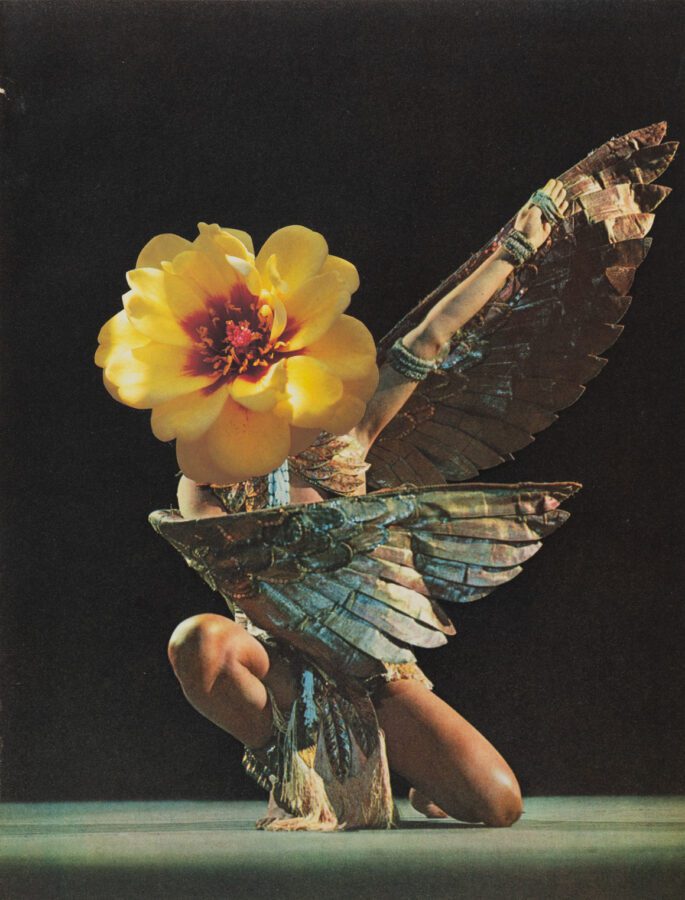
Linder, Bow of burning gold, 2023, photomontage.
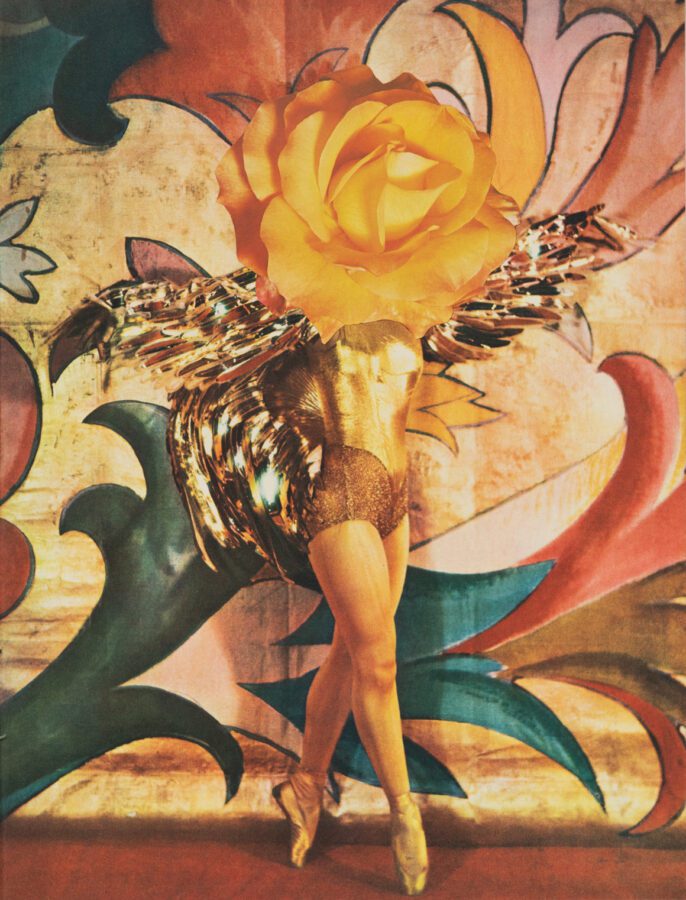
Linder, Arrows of desire, 2023, photomontage.
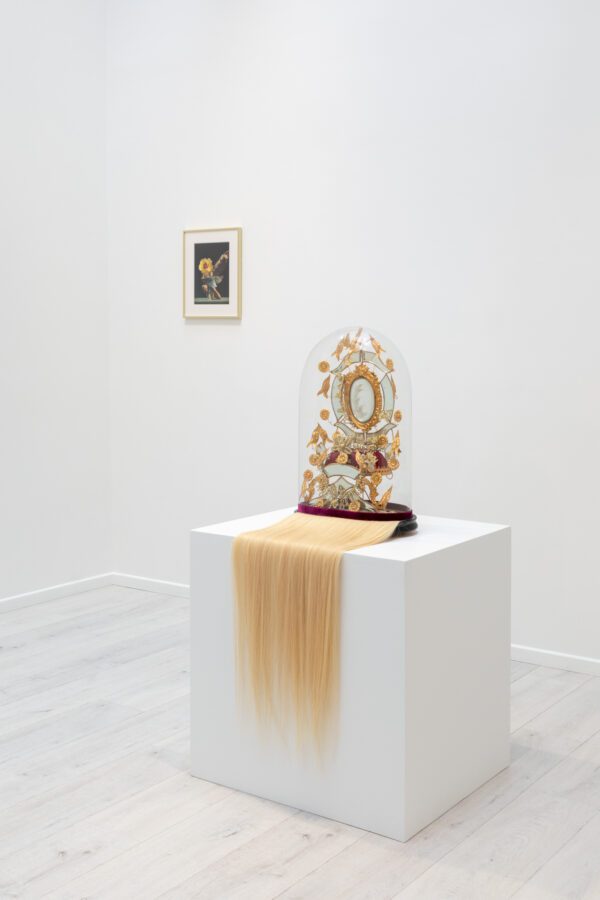
Linder, The effect of female curiosity, 2023.







